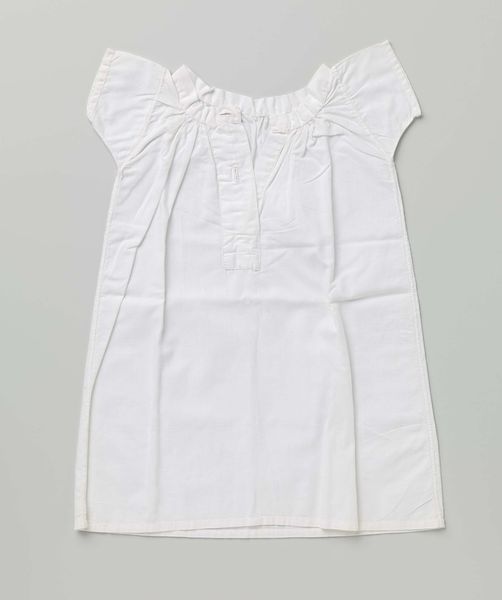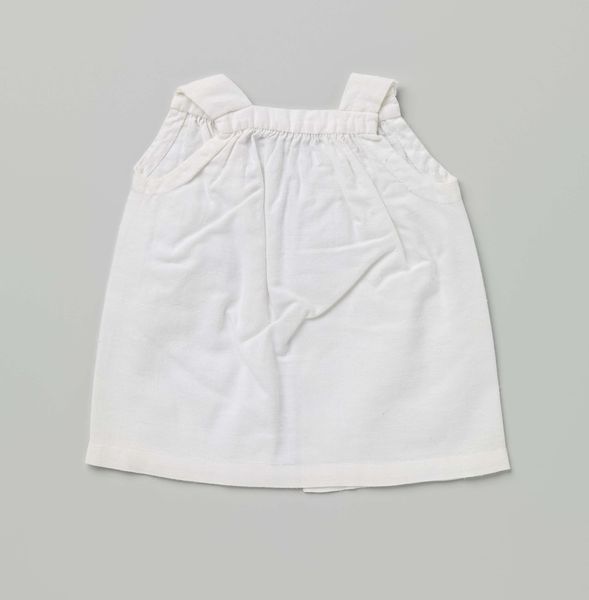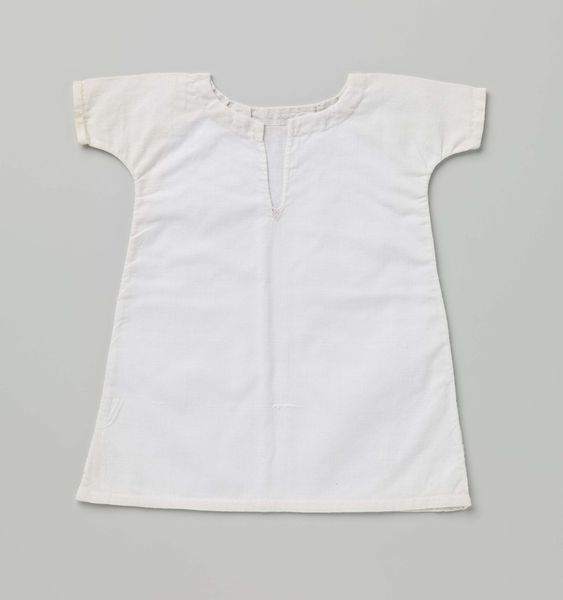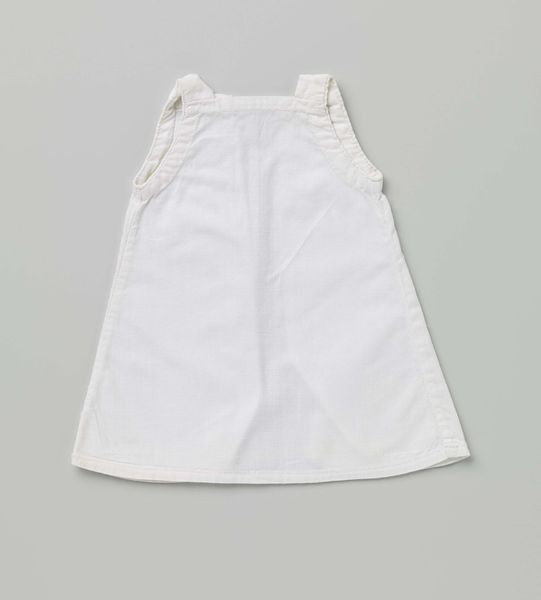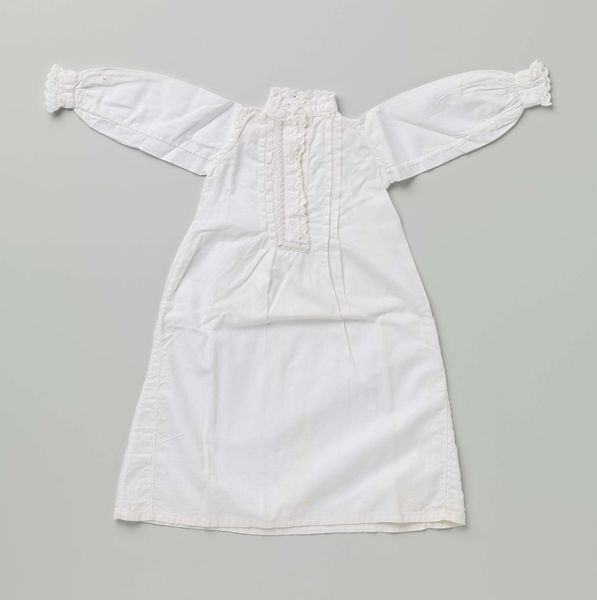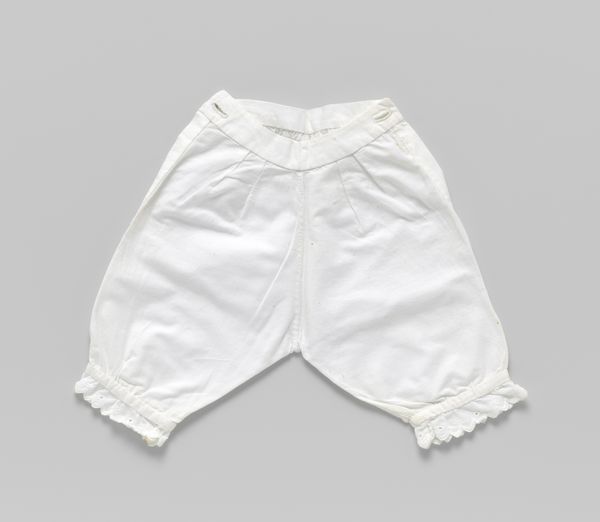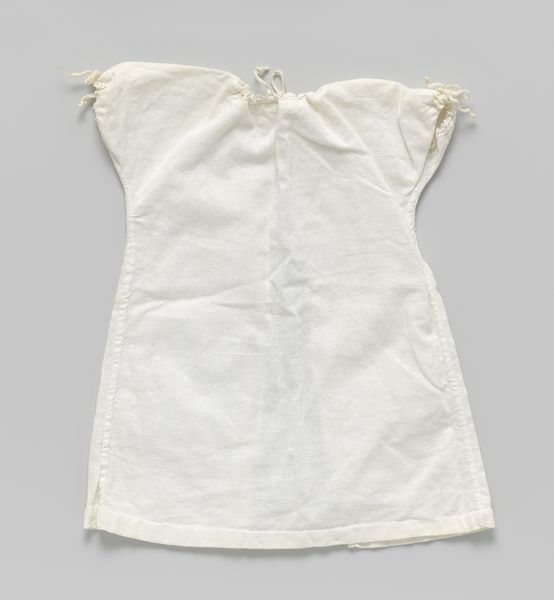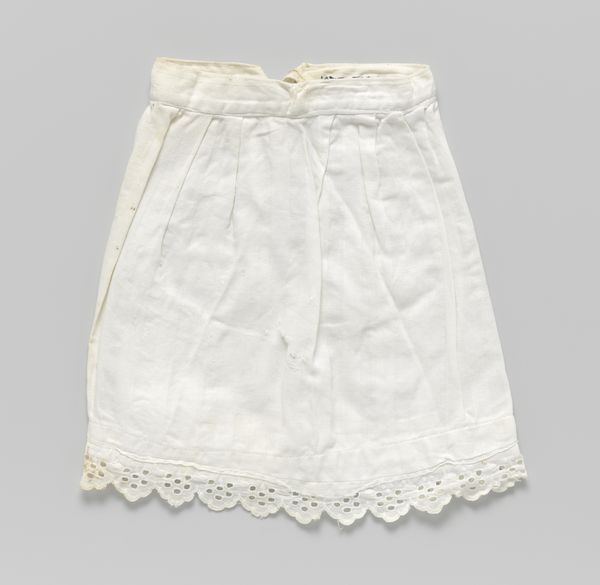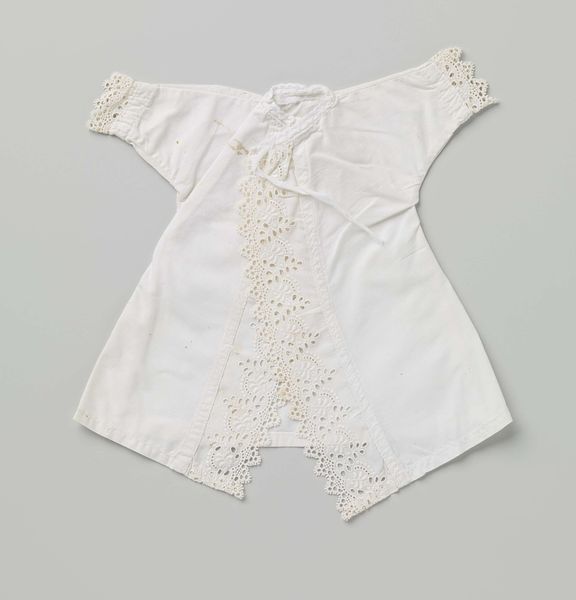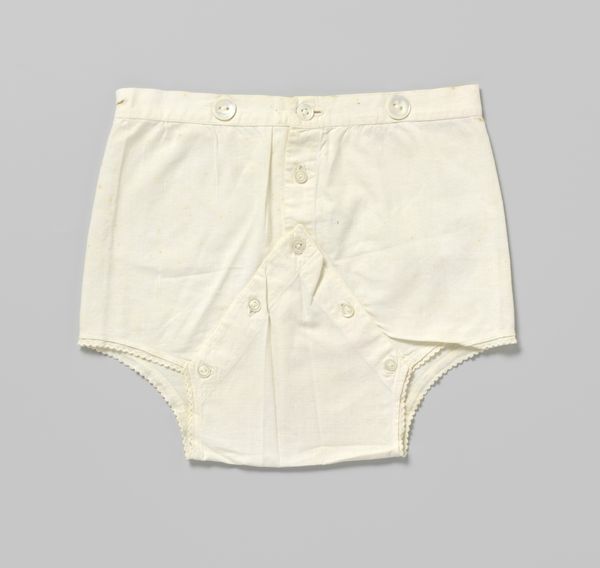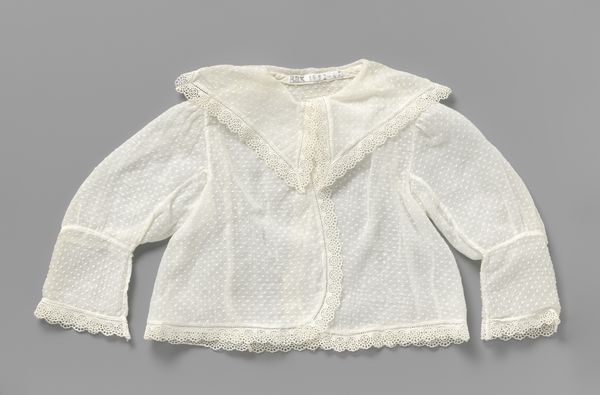
drawing, textile
#
fashion design
#
drawing
#
underwear fashion design
#
fashion mockup
#
fashion merchandise
#
textile
#
clothing promotion photography
#
fashion and textile design
#
clothing photography
#
clothing theme
#
clothing photo
#
clothing design
Dimensions: length 25 cm, width 22 cm
Copyright: Rijks Museum: Open Domain
Editor: Here we have an object titled "Babyhemd, mouwloos, van wit linnen met gerimpeld aangezette boord," or in English, "Baby Shirt, Sleeveless, of White Linen with Crimped Set Collar" dating from around 1888 to 1894, material unknown but appears to be white linen. The simplicity of the design makes me curious about the cultural values it might represent. How do you interpret this work, considering its historical context? Curator: This simple garment speaks volumes about the lives of women and children in the late 19th century. The stark whiteness, the meticulously crimped collar, hint at ideals of purity and domesticity projected onto children, especially girls. Consider the labor involved in creating and maintaining such a garment – the spinning, weaving, sewing, and endless washing, typically undertaken by women. How might this object serve as a lens through which we view gendered expectations and social hierarchies of the time? Editor: That’s fascinating! I hadn't considered the sheer amount of labor woven into what appears to be a basic item. So, it's not just a shirt; it's an emblem of the domestic burdens women carried. Curator: Precisely. Furthermore, the absence of embellishment could suggest a specific social class where practicality and modesty were prioritized. Conversely, for wealthier families, similar shirts might have been adorned with lace or embroidery, signaling status and wealth. Does that detail, or lack thereof, prompt further questions? Editor: Yes, it really makes me think about the unspoken messages embedded in everyday objects, especially concerning class and gender. Were there particular social or political movements that influenced children's clothing at this time? Curator: Absolutely! The burgeoning feminist movement, while primarily focused on women's rights, also impacted how children were perceived and dressed. The emphasis on simplicity could be seen as a subtle rejection of overtly ornamental styles that constrained movement and self-expression, mirroring similar arguments against corsets and restrictive clothing for women. Editor: This has completely changed my perspective. It’s incredible how one small garment can reveal so much about social history. Curator: Indeed. By engaging with these objects through an intersectional lens, we can uncover the complex narratives woven into the fabric of the past.
Comments
No comments
Be the first to comment and join the conversation on the ultimate creative platform.
